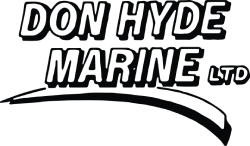Is your child's life jacket approved in Canada?
As the hot weather continues, we are all looking for an escape from the heat. Some of the best places to do that is in the pool, at the beach, or out in the boat! Most of us know when a young one is in, on, or near the water they should always be wearing a personal flotation device (PFD), but one thing so many parents and guardians overlook is that there are actually different types of floatation devices required depending on your choice of water activities.
By law, on a boat in Canada, every person on board must have a PFD or life jacket and it MUST be CANADIAN APPROVED (eg. Transport Canada, Canadian Coast Guard). Very much like Canadian car seat regulations, if they are not approved by a Canadian Agency then they are not legal on the boat. We are always cautious to make sure our children are in the right car seats, that they are buckled in properly, but when it comes to life saving floatation devices on a boat, all of a sudden "as long as it keeps them afloat and its comfortable, it's good enough!". Pull out your loved ones jackets and read them to make sure they are acceptable! Many child/youth flotation devices marketed as “Life Jackets” in your local Canadian department stores are in fact only approved for use in U.S. waters. Several of these devices that look like traditional life jackets are actually not approved PFD‘s at all, they are only considered “swim vests”.
- A standard Canadian approved life jacket will be Yellow, Red or Orange, and typically has a whistle attached to it. A life jacket is designed to turn most unconscious persons into a face-up, head-out-of-the-water position.
- A Canadian Approved PFD offers less buoyancy then a life jacket but it is still designed to keep a conscious persons head out of the water in calm conditions.
- A swim vest will only assist in flotation and learning to swim, and they are not legal on the boat.
In fact, there are many assisted flotation devices that will impulsively flip children face first into the water. When using these types of devices at the beach or in the pool they should always be tested first to ensure they will not cause more harm to a child then good!
Always ensure life jackets and PFDs are properly fitted. If you cannot tighten a life jacket enough to fit snug then it is too big. If it is a struggle to get the life jacket fastened on a child then it is too small. According to Transport Canada the device should not ride up over a child’s ears and there should be less than 7.6 cm (3”) between the child’s shoulders and the device. There is currently no Canadian approved Life Jacket/PFD on the market for an infant that weighs less than 20lbs.
Lastly, life jackets and PFD’s must be tested and inspected regularly. Check its buoyancy in waist deep water, and check and ensure all straps and buckles are in good working order. Devices that are ripped, torn, altered, or in poor condition are not considered approved.
Remember, a life jacket or PFD on a boat won’t work if you’re not wearing it. Children should always be wearing their devices on and around the dock and on the boat. Even for adults and the strongest of swimmers it is dangerous to assume you will be able to find, put on, and fasten your device while in the water. Adverse wind and wave conditions as well as many other unforeseeable obstacles can make this an impossible task.
For more information on life jackets and personal floatation devices check out the Transport Canada website.
Enjoy your time on the boat with family and friends and keep those little ones you love safe and within arm’s reach at all times!

